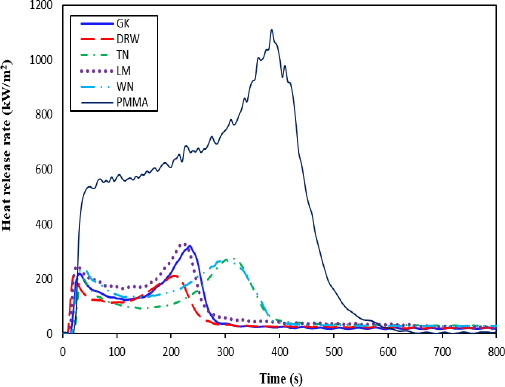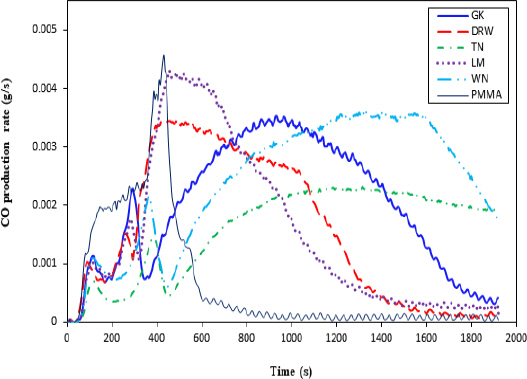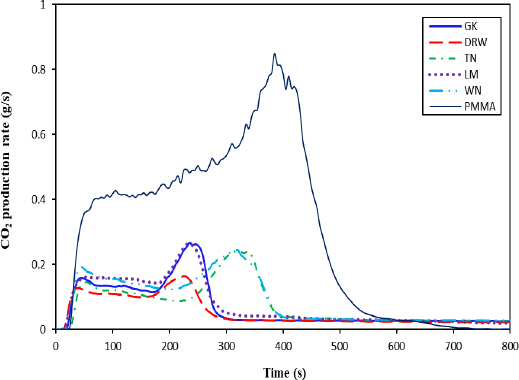1. J Buzek and E Gyoőri, “Regulation (EU) No 305/2011 of the European Parliament and of the Council of 9 March 2011, Laying Down Harmonised Conditions for the Marketing of Construction Products and Repealing Council Directive 89/106/EEC Text with EEA Relevance”, Official Journal of the European Unions, pp. 5-43
http://data.europa.eu/eli/reg/2011/305/oj (2011).
3. V Babrauskas and S. J Grayson, “Heat Release in Fires”, Elsevier, London, UK, pp. 210-217 (1992).
4. CBUF Report. “Fire Safety of Upholstered Furniture - The Final Report on the CBUF Research Programme, Sundstrom, B., Ed., EUR 16477 EN, European Commission, Measurements and Testing Report, Contract No.3478/1/0/196/11-BCR-DK (30)”, Interscience Communications, London, UK, (1995).
5. M, M Hirschler, “Analysis of and Potential Correlations between Fire Tests for Electrical Cables, and How to Use This Information for Fire Hazard Assessment”, Fire Technology, Vol. 33, No. 4, pp. 291-315 (1997),
https://doi.org/10.1023/A:1015384109580.

6. M Janssens, “Fundamental Thermophysical Characteristics of Wood and Their Role in Enclosure Fire Growth”, Doctoral's Thesis, University of Gent, Belgium, (1991).
7. ISO 5660-1. “Reaction-to-Fire Tests-Heat Release, Smoke Production and Mass Loss Rate-Part 1:Heat Release Rate (Cone Calorimeter Method) and Smoke Production Rate (Dynamicmeasurement)”, Genever, Switzerland, (2015).
9. H. C Tran, “Experimental Data on Wood Materials. In:V. Babrauskas and S. J. Grayson (Eds.) Heat Release in Fires”, Elsevier Applied Science, New Yok, USA, pp. 357-372 (1992).
10. M. J Spearpoint and J. G Quintiere, “Predicting the Piloted Ignition of Wood in the Cone Calorimeter using an Integral Model-Effect of Species, Grain Orientation and Heat Flux”, Fire Safety Journal, Vol. 36, No. 4, pp. 391-415 (2001),
https://doi.org/10.1016/S0379-7112(00)00055-2.

11. K. L Friquin, “Material Properties and External Factors Influencing the Charring Rate of Solid Wood and Glue-Laminated Timber”, Fire and Materials, Vol. 35, No. 5, pp. 303-327 (2010),
https://doi.org/10.1002/fam.1055.

12. E Mikkola, “Charring of Wood, VTT Research Report 689”, VTT Technical Research Centre of Finland, Espoo, Finland, (1990).
15. B Tawiah, B Yu, R. K. K Yuen, Y Hu, R Wei, J. H Xin and B Fei, “Highly Efficient Flame Retardant and Smoke Suppression Mechanism of Boron Modified Graphene Oxide/Poly (Lactic Acid) Nanocomposites”, Carbon, Vol. 150, pp. 8-20 (2019),
https://doi.org/10.1016/j.carbon.2019.05.002.

16. L Yan, Z Xu and N Deng, “Effects of Polyethylene Glycol Borate on the Flame Retardancy and Smoke Suppression Properties of Transparent Fire-Retardant Coatings applied on Wood Substrates”, Progress in Organic Coatings, Vol. 135, pp. 123-134 (2019),
https://doi.org/10.1016/j.porgcoat.2019.05.043.

17. Y. J Chung and E Jin, “Smoke Generation by Burning Test of Cypress Plates Treated with Boron Compounds”, Applied Chemistry for Engineering, Vol. 29, No. 6, pp. 670-676 (2018),
https://doi.org/10.14478/ace.2018.1076.

18. Y. J Chung and E Jin, “Risk Assessment of Smoke Generated during Combustion for Some Wood”, Applied Chemistry for Engineering, Vol. 33, No. 4, pp. 373-380 (2022),
https://doi.org/10.14478/ace.2022.1055.

19. Y. J Chung and E Jin, “Rating Evaluation of Fire Risk for Combustible Materials in Case of Fire”, Applied Chemistry for Engineering, Vol. 32, No. 1, pp. 75-82 (2021),
https://doi.org/10.14478/ace.2020.1103.

20. Y. J Chung and E Jin, “Rating of Fire Risk of Combustible Materials by the New Chung's Equation-IX”, Applied Chemistry for Engineering, Vol. 34, No. 2, pp. 144-152 (2023),
https://doi.org/10.14478/ace.2023.1013.

21. Y. J Chung and E Jin, “Fire Risk Index and Grade Evaluation of Combustible Materials by the New Chung's Equation-XII”, Applied Chemistry for Engineering, Vol. 34, No. 4, pp. 388-396 (2023),
https://doi.org/10.14478/ace.2023.1042.

22. W. T Simpson, “Drying and Control of Moisture Content and Dimensional Changes”, Wood Handbook Wood as an Engineering Material, USDA Forest Service, General Technical Report FPL, GTR-113, 12.1-12.20, Forest Products Laboratory, Wisconsin, USA, (1999).
23. M. M Hirschler, “Use of Heat Release Rate to Predict whether Individual Furnishings would Cause Self Propagating Fires”, Fire Safety Journal, Vol. 32, No. 3, pp. 273-296 (1999),
https://doi.org/10.1016/S0379-7112(98)00037-X.

24. Y. J Chung and E Jin, “Assessment and Prediction of Fire Risk Grades of Wood Species in Different Storage Environments”, Fire Science and Engineering, Vol. 36, No. 5, pp. 83-92 (2022),
https://doi.org/10.7731/KIFSE.e10d431f.

25. N Hirota and M Hiroi, “The Later Studies on the Camphor Tree, on the Leaf Oil of Each Practical form and Its Utilisation”, Perfumery and Essential Oil Record, Vol. 58, pp. 364-367 (1967).
26. J. D Dehaan, “Kirk's Fire Investigation (Fifth Ed.)”, Pearson, London, England, pp. 84-112 (2002).
28. M. M Hirschler, “Heat Release Testing of Consumer Products”, Journal of American Society for Testing and Materials International, Vol. 6, No. 5, pp. 1-25 (2009),
https://doi.org/10.1520/JAI102258.

29. F. M Pearce, Y. P Khanna and D Raucher, “Thermal Analysis in Polymer Flammability. In:E. A. Turi (Eds.) Thermal Characterization of Polymeric Materials”, Academic Press, New York, USA, pp. 793-843 (1981).
30. V Babrauskas, “Development of the Cone Calorimeter - A Bench-Scale, Heat Release Rate Apparatus based on Oxygen Consumption”, Fire and Mateials, Vol. 8, No. 2, pp. 81-95 (1984),
https://doi.org/10.1002/fam.810080206.

31. Y. J Chung, “Comparison of Combustion Properties of Native Wood Species used for Fire Pots in Korea”, Journal of Industrial and Engineering Chemistry, Vol. 16, No. 1, pp. 15-19 (2010),
https://doi.org/10.1016/j.jiec.2010.01.031.

32. B Schartel and T. R Hull, “Development of Fire-Retarded Materials—Interpretation of Cone Calorimeter Data”, Fire and Materials, Vol. 31, No. 5, pp. 327-354 (2007),
https://doi.org/10.1002/fam.949.













